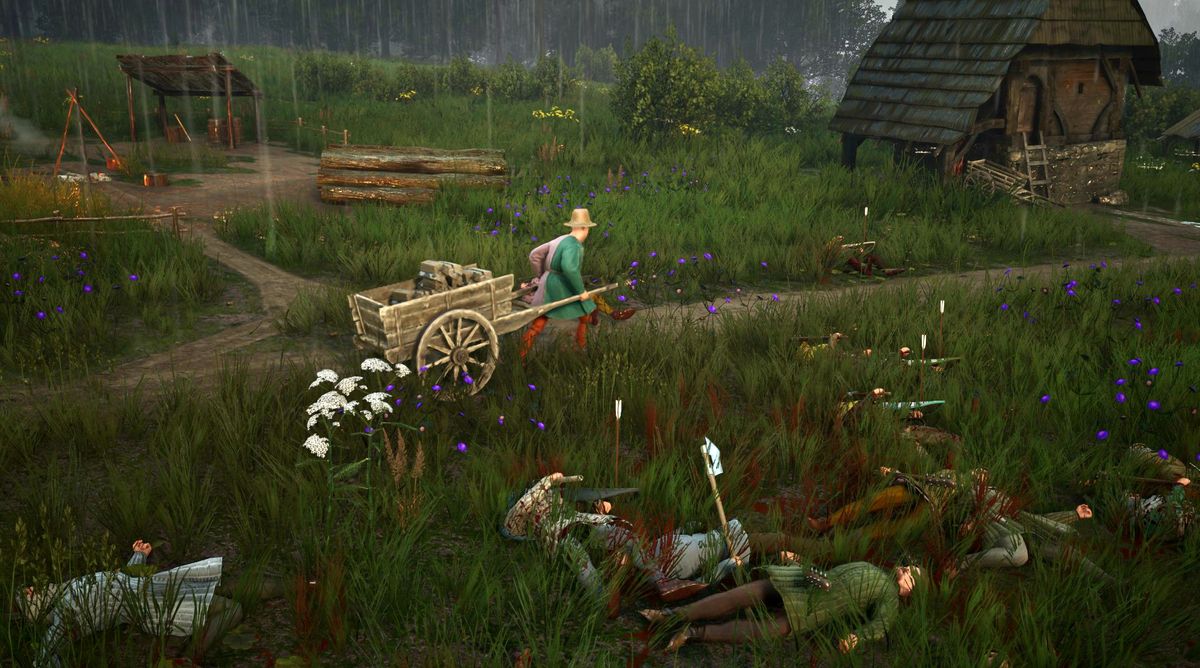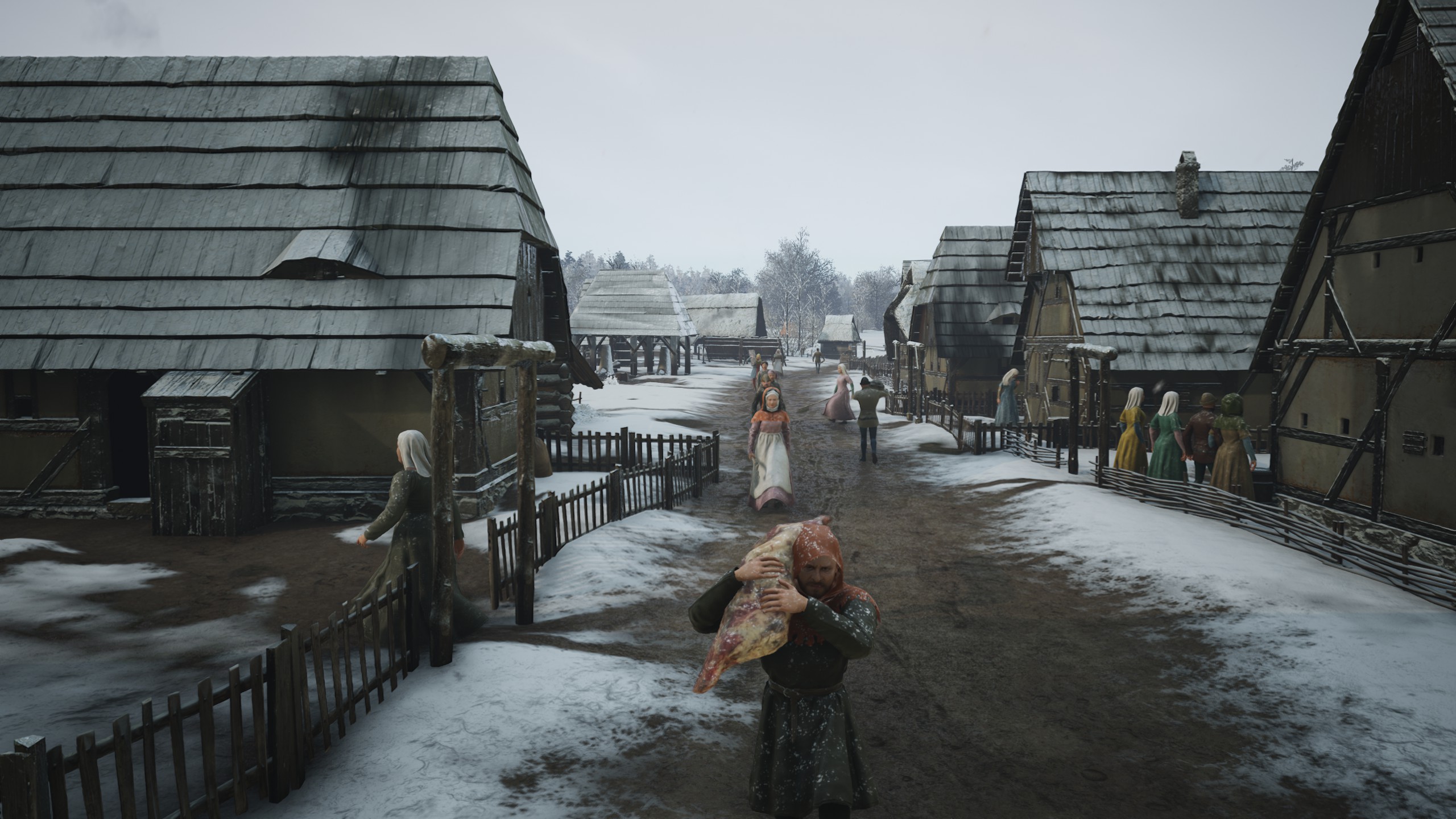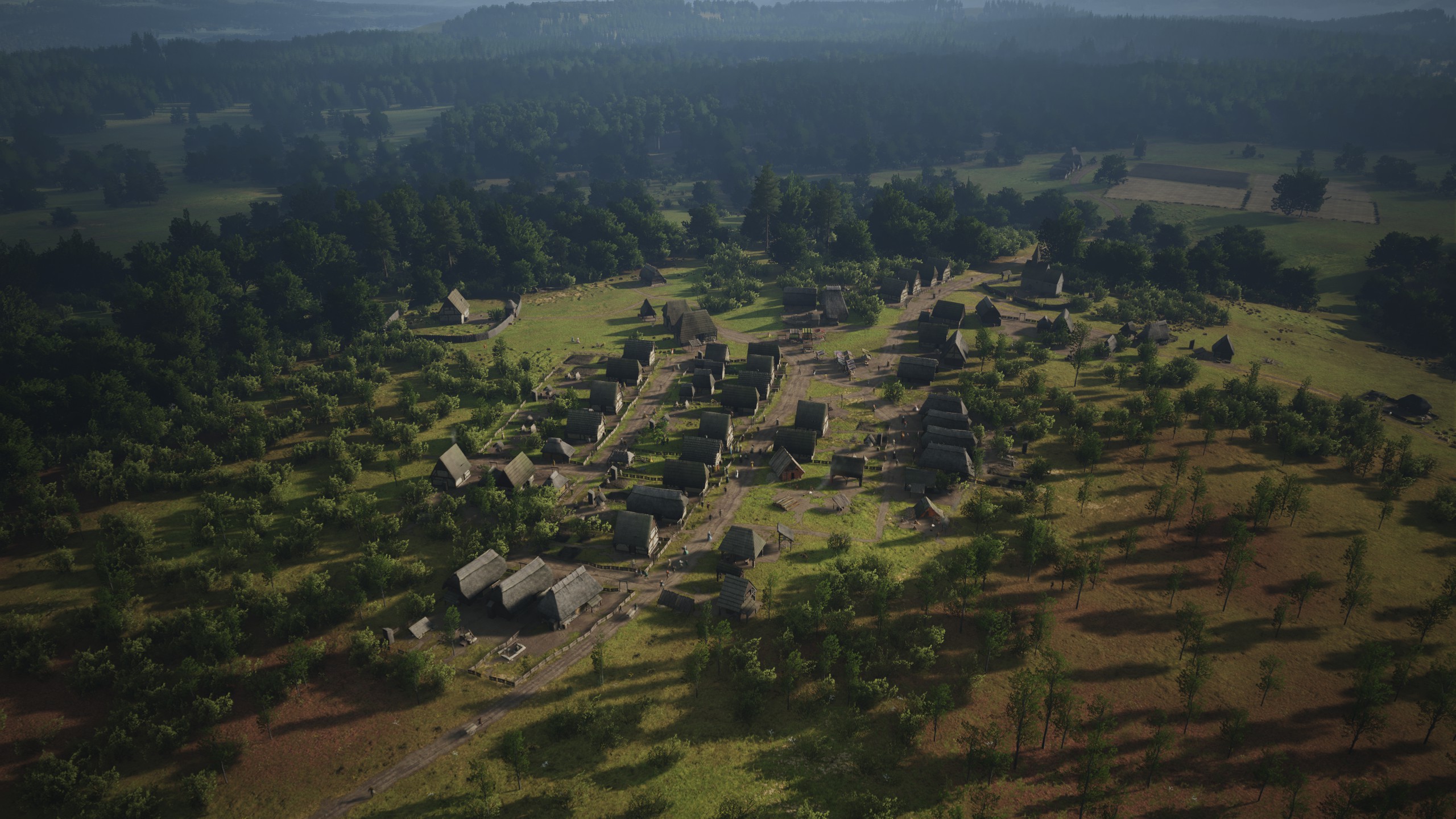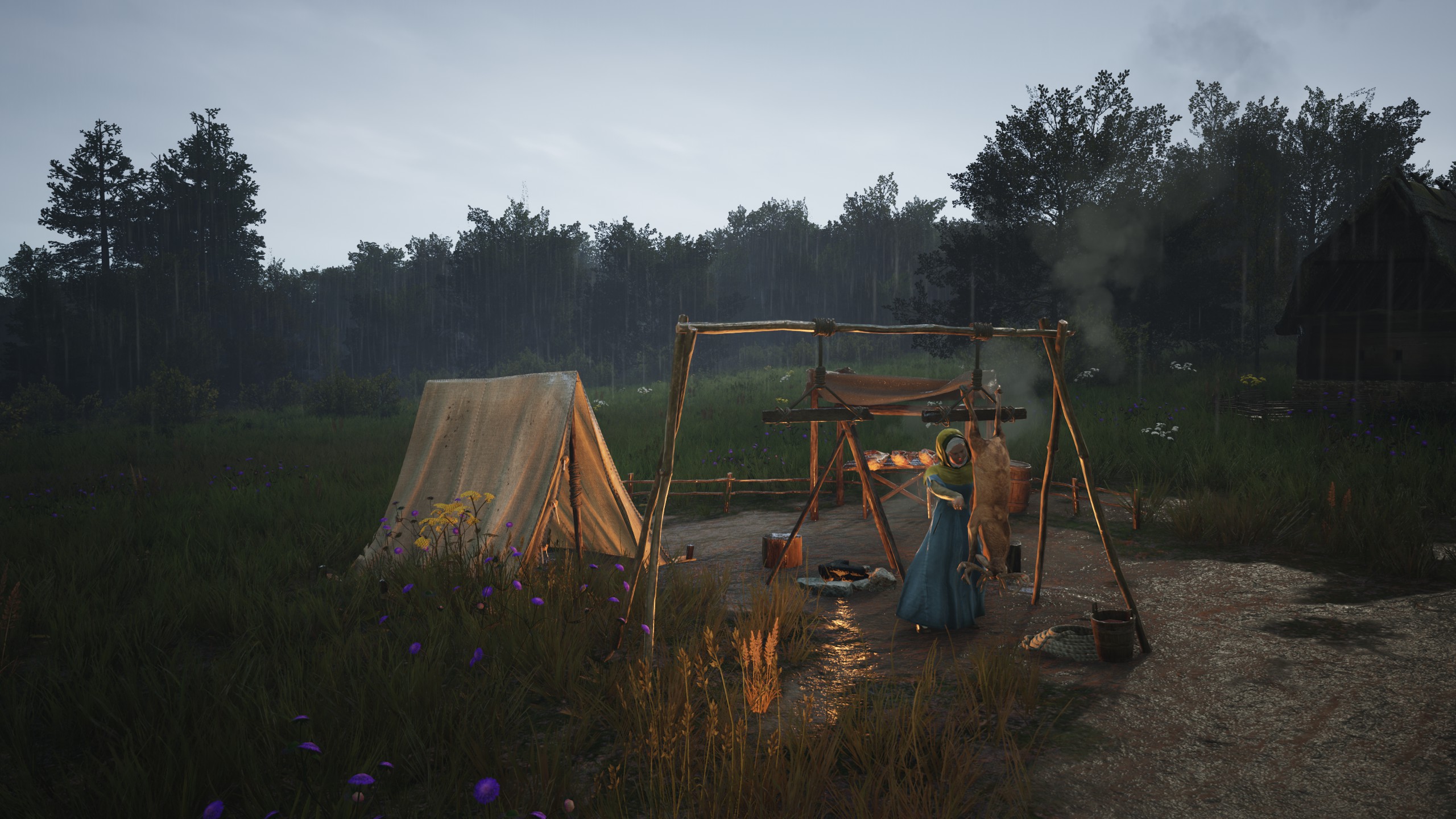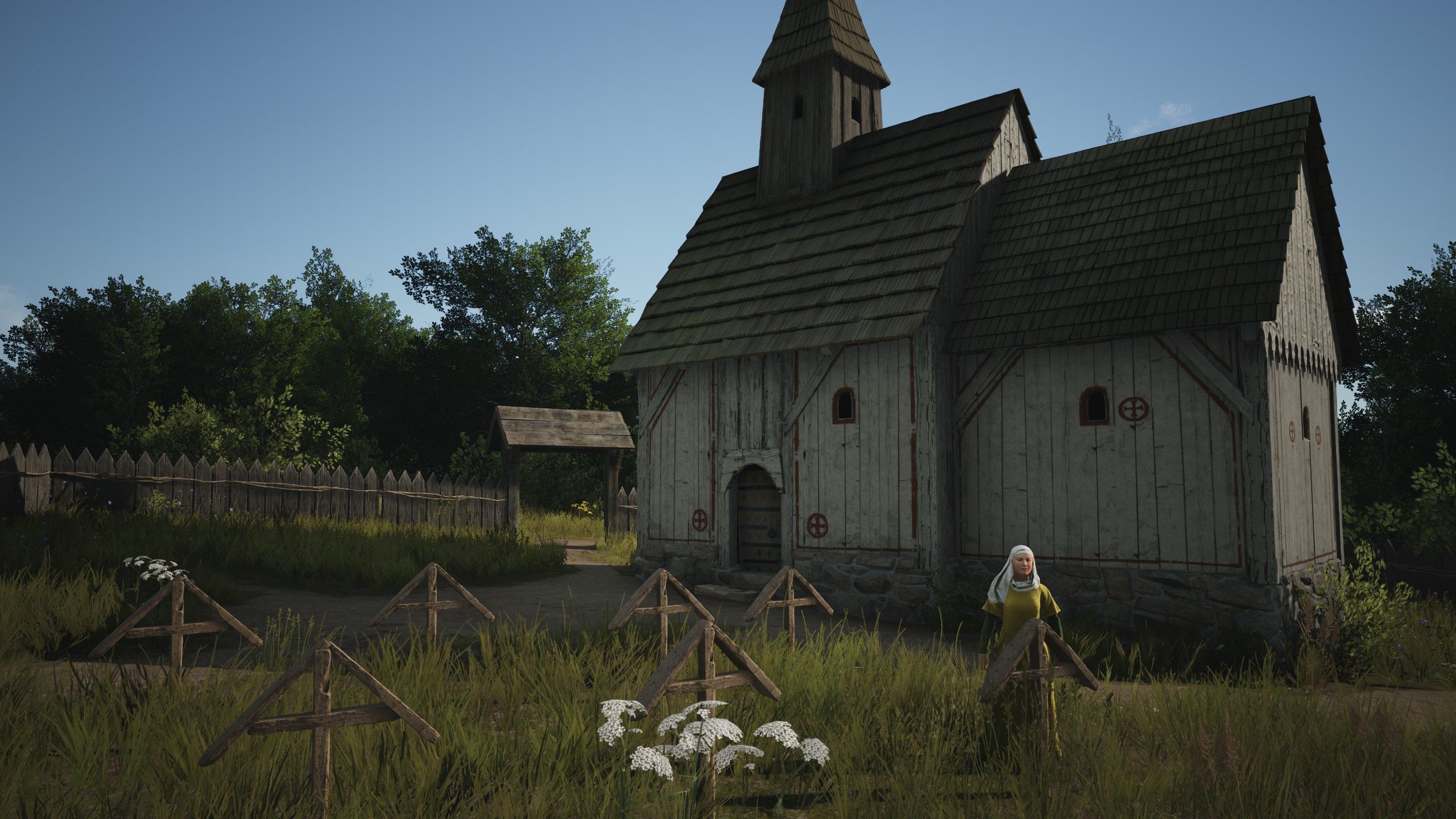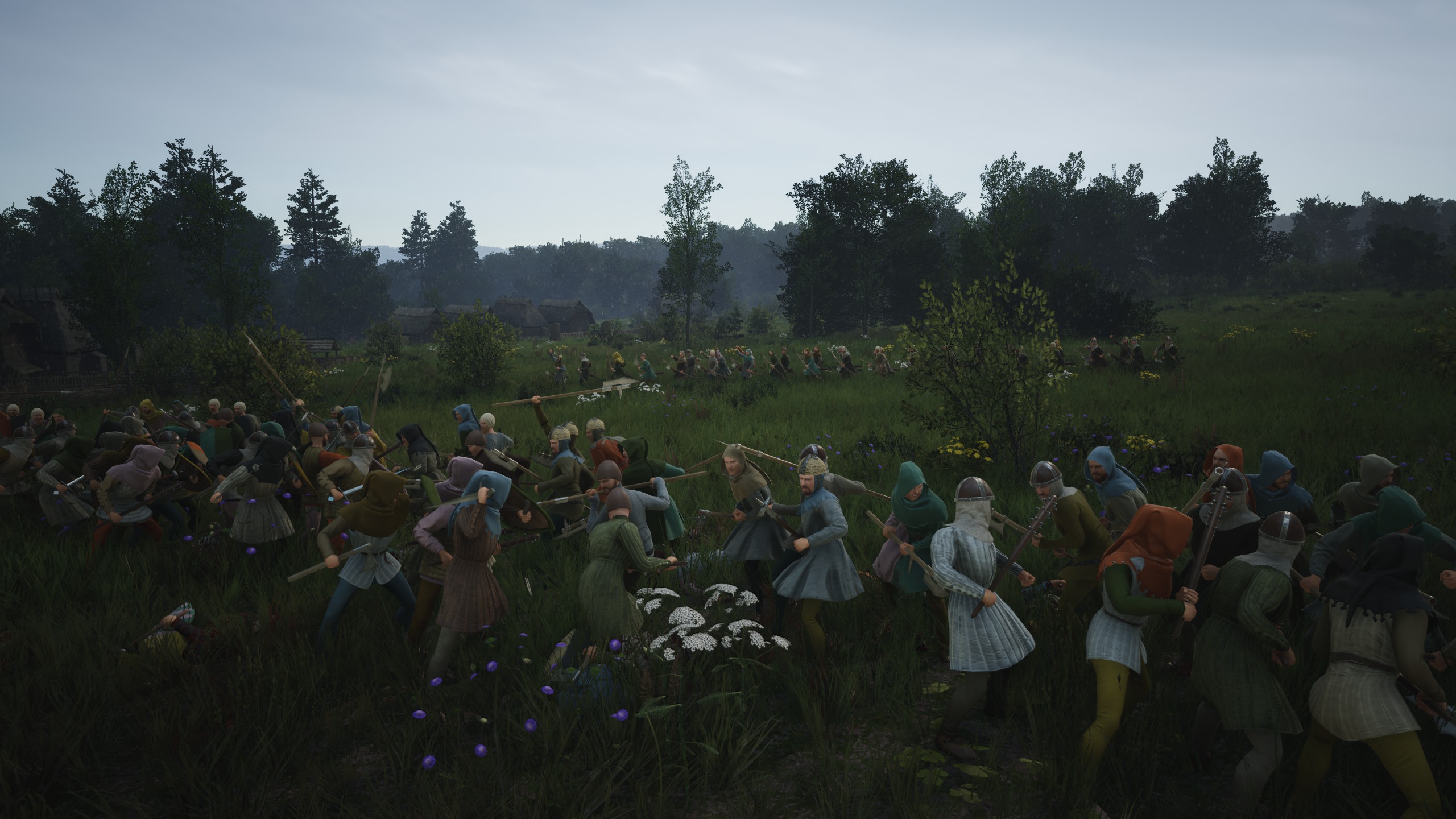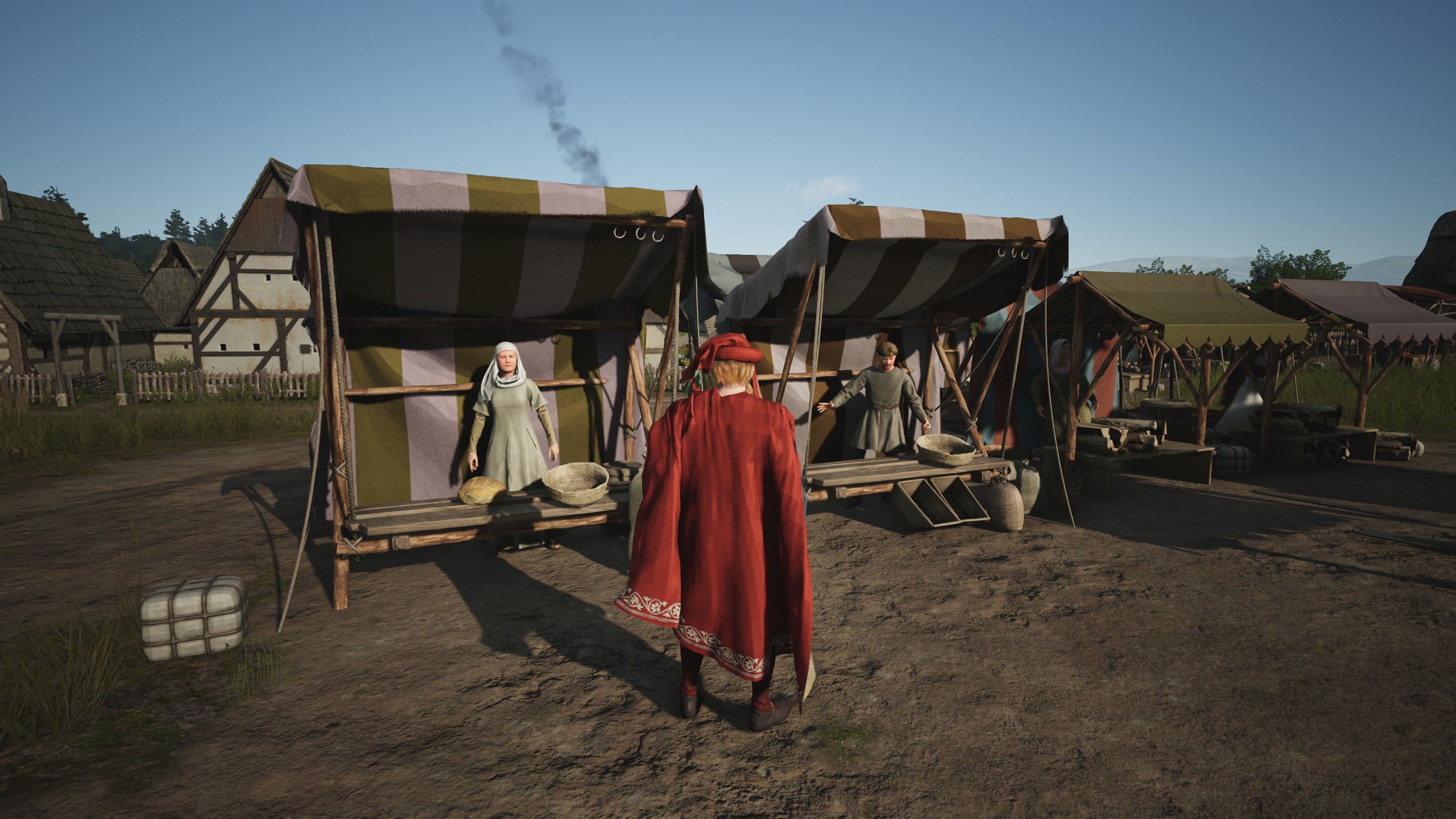There are some advantages to being a medieval peasant. Twitter hasn’t been invented yet, for instance, so your exposure to the worst opinions in the world is pretty limited. But there are, on balance, a lot more downsides. Healthcare is a tad iffy. You haven’t got any central heating. Back-breaking labour is the norm. And, if you live in my Manor Lords village, you’re probably getting really bored of eating eggs and stepping over corpses.
Manor Lords is a medieval city builder that I’ve been looking forward to for a while, and with its early access launch on the horizon, I’ve put on a fancy cloak and started to guide my people to prosperity. There have been some bumps in the road.
While the city-builder boom has seen a lot of developers create some dramatic twists on the genre—building a society on the back of a huge creature in The Wandering Village, or letting villages grow organically in Foundation—Manor Lords initially feels a bit more conventional. You start with a camp and a few homeless settlers in a heavily forested map, and from there plonk down roads and buildings, from homes to sawmills, as you attempt to expand while keeping your villagers both alive and happy.
As you upgrade homes, more demands are thrust upon you. Once content with water, food and clothes, now your villagers expect a more varied diet and piss-ups in the tavern. Bread, fruit and beer? I know, it’s ridiculous. So you erect more buildings, but that requires yet more villagers, who then need to be housed and fed, which means you’ll have to start building extra farms and more logging camps, which need even more villagers, and the cycle continues.
Within these conventions, however, Manor Lords does some very interesting things, like how a home is not merely a simple dwelling. See, while most buildings are placed individually, with homes you have to drag out a box where the size determines how many buildings will appear. The wider the box, the more homes. The height of the box, meanwhile, determines how much space each family has to develop their property.
Working from home
Once a house has been built, you can go into the building menu and start giving it more utility. This way, your villagers can grow carrots in their gardens, develop apple orchards, or raise chickens, taking some of the strain off your food production and making winters—when foraging and farming is impossible—a lot less deadly. The bigger the plot, the more fruit trees, allotments and chicken coops they’ll be able to squeeze inside them. Villagers will also work in their gardens when they’re not busy in other buildings, so this doesn’t remove a family from the workforce.
You can’t expect someone to make 20 spears and then do a stint in the fields.
The higher tier a home, the more utility you can give it. At the second tier, you can turn homes into businesses, creating blacksmiths who’ll arm your militia or brewers who will supply your tavern. Doing this, however, creates families of artisans, which means they won’t be able to work in other buildings. You can’t expect someone to make 20 spears and then do a stint in the fields. Well, as a tyrannical medieval noble you probably can expect that, but you really shouldn’t.
Anyway, this is why everyone in my village eats too many eggs. See, food production is tough. A tiny village is easy to maintain, but after a certain point you’re not going to be able to maintain a surplus for winter from just hunting and gathering. That’s when you should start thinking about farming, but that’s labour intensive and time consuming. Workers need to till the soil, plant seeds, wait for them to grow and then harvest them. This takes months. Then they need to turn the wheat into grain and deliver it to the mill, where a different set of workers turn it into flour and put it in storage. Finally, the bakers will turn that flour into bread and sell it in the market.
The bread-making process can remove up to 14 families from the labour pool, and requires a bit of micromanagement later in the year when they have nothing to do, so must be placed in new roles. I just decided to fill everyone’s garden with chickens instead. This might be an era of feudalism, but my villagers are a bunch of community-minded proto-communists. They control the means of production, and then share it by taking what they harvest in the village storehouse, after which it can then be distributed in the market for everyone to enjoy. Eggs for all!
Now, I like an egg. On some toast. In a bowl of ramen. Made entirely of chocolate. Eggs are grand. If I only ate eggs, though, I might get a wee bit sick of them. My villagers felt the same way. With only a small amount of non-egg produce being shifted in the market, my villagers started grumbling and my approval rating plummeted. It also became harder to attract new households, and with less food variety I wasn’t able to upgrade any of my existing homes. My egg strategy—so tantalising initially, so seemingly forward-thinking—proved to be devastating for the community. Progress halted and I looked like a right old idiot.
Death and taxes
It absolutely did not help that the village was dealing with a bit of a corpse problem. In the default early access scenario, you’re encouraged to play at your own pace because your sole rival lord will largely leave you alone. You’ll see their armies marching around and you might get a bit miffed when they gobble up territory near you, but until you’re ready, you never need to confront them. Bandits, however, are a different matter. At first the presence of their camps just syphons off resources thanks to their sticky fingers, but eventually they’ll start attacking your village.
The good news is that bandits are actually quite shit at fighting, and right out the gate you have enough weapons to make a small militia. Once you’ve got some iron, wood and artisans, you can then create a lot more, or you can just create a trade route and purchase what you need. With two or three units with 20-30 troops, you’ll easily be able to defend a single village. Fighting is still a risk, though. When members of the militia die, unsurprisingly that means they can’t work, so you’ll be stuck with a family that’s not pulling its weight until they can replace their dead loved one. I’ve yet to be struck with too many villager deaths, though; the problem I’m facing actually stems from the effectiveness of my little warriors.
Corpses, it turns out, do not simply vanish the moment they hit the ground. Who could have known? When a villager dies, they’re buried in the church graveyard, but bandits don’t deserve this honour. They get flung into a corpse pit. A corpse pit that I did eventually remember to build, but which I forgot to activate by employing a villager. Now, I don’t know if you’ve ever had to wade through rotting cadavers on your way to the pub or on your morning commute, but judging by the reaction of my villagers it is not a very pleasant experience. They still find being taxed far more egregious, granted, but dead bodies ranked high on their list of things they hated about living in my village.
In some city builders these issues could have spelled my village’s doom, but Manor Lords is not a brutal survival city builder. Winters can be harsh, deaths can create setbacks, and you can’t thrive on eggs alone, but it’s otherwise pretty forgiving. A bit of trading can usually fix most problems. If, for instance, you also over-invest in eggs, it’s simple enough to start exporting anything you have in surplus and then import some food. By spending a bit of cash you can also create proper trade routes to ensure a more regular supply.
Winters can be harsh, deaths can create setbacks, and you can’t thrive on eggs alone, but it’s otherwise pretty forgiving.
You can also create an internal trade network by claiming other regions and developing more villages. Indeed, that’s essential. Every region has the basic resources you need, but that won’t be enough in the long term, necessitating the development of a settlement further afield. The impetus for my first expansion was booze. There was nowhere in my starting region suitable for growing barley, so I had to spend influence to claim one next door. Now my peasants are all boozed up and hate me less—hurray!
While all this talk of death and taxes and eggs might paint a gloomy picture, Manor Lords is a fetching city builder that lets you properly admire what you’ve built. I’ve spent a considerable amount of time walking around it as my noble, and even outside of that mode you can go from looking at a map of every region right down to street-level seamlessly. If you’re hopelessly obsessed with taking screenshots like I am, you’ll also likely appreciate the ability to remove the HUD by hitting CTRL+C. Clearly a lot of work has gone into animating villagers, and between the range of outfits and activities, they are surprisingly distinctive. For a game where you’ll be spending a lot of time zoomed out, it’s also impressive how much fine detail it boasts, like market stalls displaying their actual goods or villagers getting coated in snow when they go for a wander during winter.
Manor Lords feels pretty polished as early access joints go, and so far the only issue I’ve encountered is when some homes in my second village were razed by bandits. I couldn’t rebuild them, and when I demolished the empty plots they turned into “temporary” storage areas that were in fact permanent and impossible to shift. The villagers, meanwhile, refused to move into the empty homes I’d generously built for them, instead choosing to freeze to death when winter arrived. My peasants are hard workers but not too bright.
While the current build is missing a lot of upgrades and policies that let you fine-tune your medieval society, I’ve still found myself extremely busy over the last few days, and I’ve got a lot more to explore before I build up enough courage to declare war on my rival. I’m sure my villagers can’t wait for more corpses.
Anyway, harvest season is coming up soon, so I’d better get back to it. But you know what? Before I begin, I might just make myself a tasty omelette.

